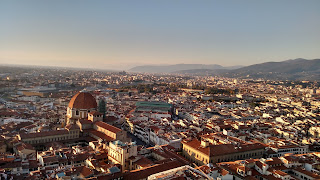Overview
Last summer (2015), I was perusing some technical articles on textile archaeology and I came across a reference to Byssus, a fiber also called "Sea Silk" spun from the collagen/keratin complex produced by the Pinna Nobilis, clam. I found it so intriguing, I began to google everything I could learn about this mysterious fiber with a history of sacred use for over 7,000 years.The Pinna Nobilis
What I learned was that Byssus was a sacred art fiber spun from a very particular type of clam, which is now an endangered species. This most revered, largest and "noble" species of clam is called the Pinna Nobilis and can grow up to 1 meter high, standing straight up on the ocean floor, like in the photo below. This bronzed clam sculpture reached just below my arm pit and was the actual clam.
7,000 Year History of Sacred Use
Byssus is exceedingly rare, requiring great dedication to produce a usable fiber. The arduous process required to refine it was probably one of the reasons it was reserved only for the most sacred applications. Presumably it was used as the first altar cloth, it was believed to be the material from which the Golden Fleece was made, it was used for robes of Pharaohs, Rabbis, Popes and kings, among other religious artifacts like the Veil of Veronica. It's primary captivating qualities are that when held in the sunlight, it gleams like gold and is completely weightless.
In art, Byssus is portrayed as a gossamer veil, as you can see from this piece by the Master of Femalle depicting the Veil of Veronica in 1430.
 |
| "Sweat Cloth" Painted by the Master of Flémalle, ca. 1430 |
Her protegees told me that people from all over the world contact her to buy Byssus and to get her time, but they protect Chiara Vigo by responding on her behalf to keep the profiteers away. So I feel very privileged that she responded so immediately to my email, inviting me to be her guest. I made it very clear that I simply wanted to learn because I knew that money was never to be discussed or near this sacred fiber.
Maestro's Commendation from the Vatican
Absolutely Weightless
I've touched A LOT of fiber over the years. But never have I ever held 120 gm of fiber in my hand without knowing it.
The Maestro asked me to close my eyes as she placed 120 grams of cleaned and carded Byssus in my palm. I waited for the longest time to open my eyes because I never felt it touch my hand. I asked her to try the experiment again by turning my hand over, in the event that my palm was not sensitive enough, and sure enough, it was simply weightless and imperceptible; however, over the course of a few moments, I began to feel warmth, and that is the only way I knew I was holding it.
This bit of Byssus was "blonded" in her special secret formula of lemon juice, herbs and oil, so it appeared I was holding strands of gold, which felt like angel hair.
I took this photo from the internet because my eyes were closed during this process.
"Blonding" & Dyeing
Converting the brownish claim fiber into glistening gold involves processing in natural oils, herbs and lemon juice all accompanied by more than 40 different Aramaic prayers and songs. The only other colors used are the sacred colors of red and royal purple achieved with fruits and grapes.
The Lion
Chiara Vigo uses many symbols that have a folk art quality, but are actually based on ancient depictions, like this lion, which has Phoenician qualities. She brought this piece outdoors to show how the gold gleams in the sunlight, while looking a little coppery brown indoors. The Lion is her design embroidered in blonded Byssus on handmade, handwoven linen.
Chiara Vigo dives at a highly specific time of year (May-June) when the ocean reaches just a two degree temperature range and ocean salinity is just 4ppt, to harvest just the very top 2-5 cm of the Pinna Nobilis hair. In one season, this highly labor intensive process yielded about 300 gm of fiber after at least 100 dives, but after carding and cleaning, only 120 gm was usable. As a result, one of her masterpieces took five years to create.
 |
| At 60 Years Old, the Maestro Still Dives to Harvest Byssus Herself |
 |
| Maestro Autographs My Book with the Peacock - Pre-Christian & Ancient Christian symbol of Eternal Life |






























